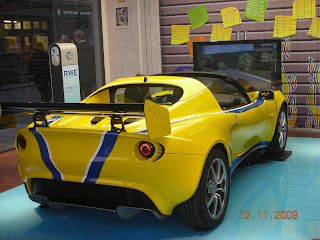
An all English venture to produce an environmentally friendly sports car. The efforts of six of the following institutions –
Oxford University
Morgan Motor Company
OSCar (now Riversimple)
BOC
QinetiQ
Cranfield University Systems
Delta Motorsport
I came across this topic while reading the Oxford Today magazine, and here is a brief idea to what each institution is bringing to the LIFEcar project –
Oxford University – Dr. Malcolm McCulloch, who heads the Electrical Power Group in the Department of Engineering Science, led the development of the motor of the car. The motor is half that of a conventional motor and of the same torque. The new design is called a YASA motor (Yokeless and Segmented Armature).
Morgan Motor Company – The design of the LIFEcar has been undertaken by classic motor car company.
OSCar – The founder and brainchild of this project, Hugo Spowers, wanted to see if it is possible for an electric vehicle to perform as efficiently as a sports car, and responsible for overall system design.
BOC - developing the hydrogen refueling plant, keeping in mind there are only 100 such stations aound the world.
QinetiQ – provided the fuel cell that generated electricity from compressed hydrogen.
Cranfield University Systems – in charge of on-board computing, vehicle controller and modeling software. This included simulations of the vehicle’s performance.
Delta Motorsport – they have agreed to use the motors for the battery-powered four seat coupe it plans to have ready for the test drives by end of this year.
A basic description and nature of the concept LIFEcar is, it has a fuel cell, electric powered engine converting electricity to hydrogen and emits nothing but water. The motor is ultra light weight, using alternative advances in materials. It’s also worth mentioning that each wheel is controlled with an electric motor, similar to the Whispering Wheel concept.
Ultra capacitors installed in the car store energy store energy while braking and shoots out this energy while acceleration. There are 150 such Ultra capacitors. A range of 250 miles, acceleration of 060 mph in 7 seconds and fuel consumption equivalent to 150 miles to a gallon of petrol, with zero carbon emissions.
Such is the design of the LIFEcar.


































